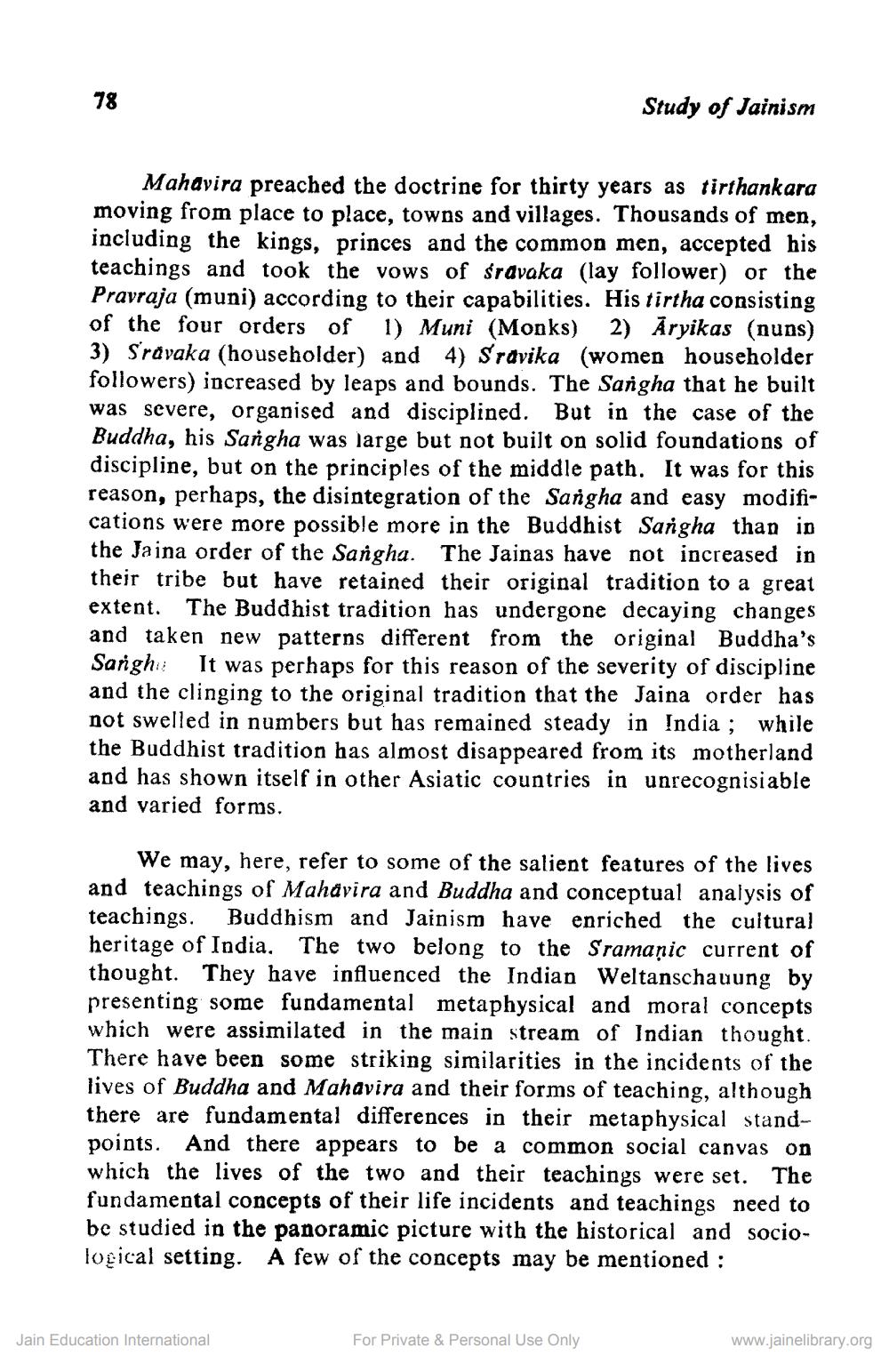________________
78
Mahavira preached the doctrine for thirty years as tirthankara moving from place to place, towns and villages. Thousands of men, including the kings, princes and the common men, accepted his teachings and took the vows of sravaka (lay follower) or the Pravraja (muni) according to their capabilities. His tirtha consisting of the four orders of 1) Muni (Monks) 2) Āryikas (nuns) 3) Sravaka (householder) and 4) Sravika (women householder followers) increased by leaps and bounds. The Sangha that he built was severe, organised and disciplined. But in the case of the Buddha, his Sangha was large but not built on solid foundations of discipline, but on the principles of the middle path. It was for this reason, perhaps, the disintegration of the Sangha and easy modifications were more possible more in the Buddhist Sangha than in the Jaina order of the Sangha. The Jainas have not increased in their tribe but have retained their original tradition to a great extent. The Buddhist tradition has undergone decaying changes and taken new patterns different from the original Buddha's Sanghu It was perhaps for this reason of the severity of discipline and the clinging to the original tradition that the Jaina order has not swelled in numbers but has remained steady in India; while the Buddhist tradition has almost disappeared from its motherland and has shown itself in other Asiatic countries in unrecognisiable and varied forms.
Study of Jainism
We may, here, refer to some of the salient features of the lives and teachings of Mahavira and Buddha and conceptual analysis of teachings. Buddhism and Jainism have enriched the cultural heritage of India. The two belong to the Sramanic current of thought. They have influenced the Indian Weltanschauung by presenting some fundamental metaphysical and moral concepts which were assimilated in the main stream of Indian thought. There have been some striking similarities in the incidents of the lives of Buddha and Mahavira and their forms of teaching, although there are fundamental differences in their metaphysical standpoints. And there appears to be a common social canvas on which the lives of the two and their teachings were set. The fundamental concepts of their life incidents and teachings need to be studied in the panoramic picture with the historical and sociological setting. A few of the concepts may be mentioned:
Jain Education International
For Private & Personal Use Only
www.jainelibrary.org




